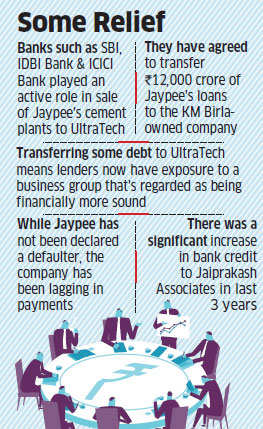It’s a good time to be in the market, says Anand Piramal
Mumbai: Indian billionaire Ajay Piramal is a man on a shopping mission. His firms are training their sights on distressed assets discarded by indebted businesses and banks struggling with bad loans.
His unlisted real estate unit, recently flush with cash from Warburg Pincus and Co. and Goldman Sachs Group Inc., is looking to buy land parcels from distressed developers, a month after Piramal Enterprises Ltd announced a $893 million fund to buy soured loans. The group’s investment arm is financing builders, who in turn can buy or co-develop projects with their troubled peers.
“My father says we should be like a nimble gorilla so you are able to move quickly, but at the same time you should have the capital to move,” Anand Piramal, the group’s executive director and scion who manages the real estate business, said in an interview in Mumbai. “It’s a good time to be in the market.”
Rich pickings may come through for the Piramal conglomerate as Indian developers’ cash flow from operations fall short of their finance costs and lenders, desperate to recover dues, tighten screws demanding repayment. Saddled with distressed assets at a 14-year high, banks in Asia’s third-largest economy have reported record losses amid pressure from regulators to clean up.
Piramal Realty will “look at good, prime parcels of land with a clean title” from distressed developers and is already in talks for as many as five deals, Piramal said. Disputes over land ownership are common in India, with cases dragging because of litigation for decades.
Sellers are becoming “more amenable now” toward deals to overcome financial stress, which may continue for another year at least, Piramal said. “Capital is always a source of competitive advantage.”
Goldman Sachs acquired a minority stake in the company for $150 million in August, about a month after Warburg Pincus bought into it, pumping in Rs.1,800 crore ($268 million). The company has about 10 million square feet under development in Mumbai and plans to invest 160 billion rupees in the next four years.
Big boys
Builders are selling assets as they streamline operations driven by both strategy and distress, according to Shobhit Agarwal, managing director for capital markets at property broker Jones Lang LaSalle India. “Developers are turning to these big boys because they have both the money and the market trust to make sales plus command a premium,” Agarwal said.
As smaller local builders struggle with byzantine approvals processes, high cost of financing, dwindling sales and drying cash flows, moneyed-up investors such as KKR and Co. and Piramal Realty are swooping in, lured by the prospect of acquiring property at deep discounts from down-and-out developers.
Piramal Fund Management, the family’s real-estate funding vehicle, is distributing as much as Rs.15,000 crore to about 10 developers that are in a position to buy land or collaborate with struggling competitors.
Distress fund
The listed Piramal Enterprises announced setting up aRs.6,000 crore Piramal India Resurgent Fund with the specific mandate of acquiring soured loans, according to a post-earnings presentation in February. Piramal declined to share any details about the new fund or the sectors it’ll focus on.
Shares of Piramal Enterprises, which sells medicines to financial services, have risen 0.8% in the past year, compared with a 16% decline in the S&P BSE Sensex and the 3.9% drop in the 63-member S&P BSE Heathcare index.
The total cash flow from operations for six developers tracked by Moody’s Investors Service, was at Rs.300 crore in the year ended March 2015, dwindling from Rs.3,000 crore in 2011, while total interest costs rose to Rs.3,600 crore fromRs.2,900 crore over this period, the data showed.
Lenders struggling to recover loans that have soured has weighed on credit in the country. Reserve Bank of India governor Raghuram Rajan has set banks a March 2017 deadline to tidy their balance sheets while India’s top court directed the RBI last month to share a list of the country’s largest defaulters in the past five years.
Loans to commercial real estate segment grew 5.9% to Rs.1.7 trillion in 2015, less than half of the 14.8% growth the year earlier, data compiled by RBI show.
“The squeeze is also coming in because of the banks,” Piramal said. “If banks are able to push developers to accept more reasonable valuations, then groups like us can step in. I think it’s happening.”











